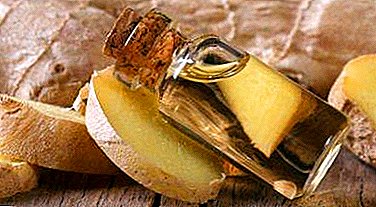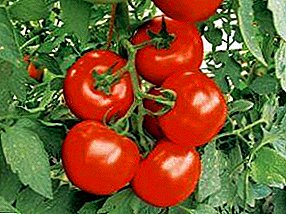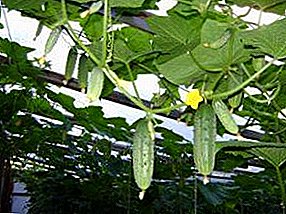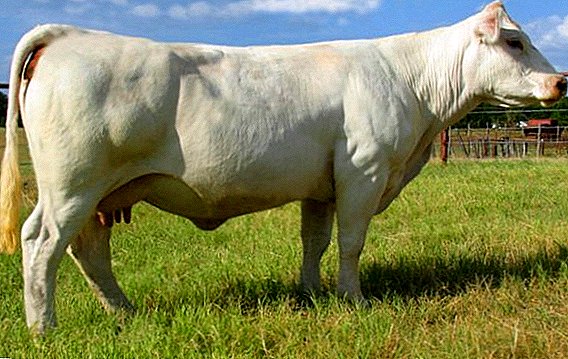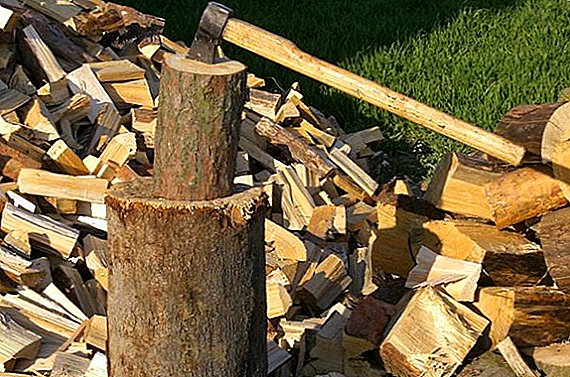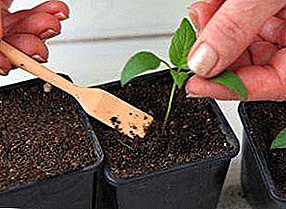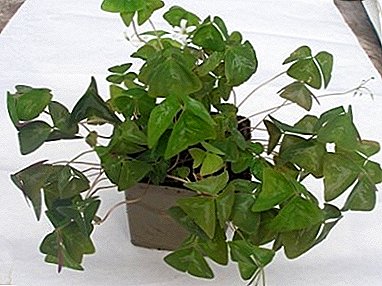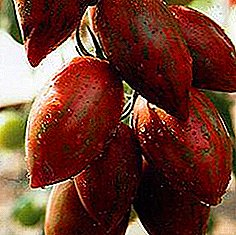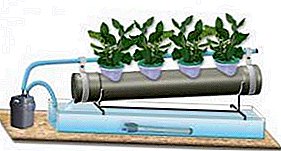
In greenhouses for many decades it is customary to grow a variety of plants, most often for this purpose the standard method is used.
Recently, an increasing distribution hydroponics method, it can be used to significantly increase the yield, the method is ideal for conditions of deficiency of fertile soils, rocky areas, etc.
The technique has a long history - it was she who was used in the construction of one of the wonders of the world - the gardens of Semiramis.
What is hydroponics?
Hydroponics is a unique method of growing plants, which has its advantages and disadvantages. Knowledge of the nuances and compliance with technologies allows us to speed up the process of obtaining the harvest of vegetables and herbs.

An important difference in hydroponics is the ability to feed plants with useful substances (potassium, zinc, calcium, sulfur, magnesium, iron, phosphorus, nitrogen, etc.). As a substrate foam rubber is used, expanded clay and other similar materials.
What is hydroponics used in greenhouses?
The use of hydroponics in a greenhouse has certain advantages compared to traditional methods.
This method allows to achieve the following goals:
- yield increase, plants are strengthened due to the increased content of nutrients and their accelerated release to the roots;
- no need for regular wateringevery 2-3 days it is necessary to add a solution to the container;
- the roots are constantly moistened and do not experience oxygen deficiency, as often happens when planting plants in the soil;
- reduced incidence, the number of insect pests is reduced - there is no need to use chemicals to control them;
- no radionuclides accumulate in plants, nitrates and heavy metals, always present in the earth.
What plants are suitable for hydroponic cultivation
 This technique is widely used in the cultivation of indoor plants, and now the method is also used in the cultivation of vegetables, berries, herbs.
This technique is widely used in the cultivation of indoor plants, and now the method is also used in the cultivation of vegetables, berries, herbs.
Most often it is cucumbers, tomatoes, legumes, strawberries, strawberries, parsley, celery, basil, rosemary, lettuce, mint, etc.
In Japan, hydroponics is used in the cultivation of melons, and the crop is not as large as when it is planted in the ground. In Holland, the method is widespread in the cultivation of tulips, roses and other decorative flowers.
What equipment is needed
The greatest demand today are professional installation, according to the principle of action there are a large number of their varieties.
According to the method of water supply, there are three main types of installations: aeroponic, drip and periodic flooding, the latter are in the greatest demand. But in any system, regardless of the technique used, the nutrient mixture is fed into the root zone, which greatly simplifies the assimilation of substances useful for plant growth.
A mandatory element of any such system is hydro potconsisting of internal (most often plastic) and external capacity. At the bottom and walls there are holes through which oxygen and useful trace elements are supplied to the roots.
Planting is carried out in an internal vessel filled with a substrate, which is used as granules of expanded clay with a size of 2-16 mm.
The material is chemically neutral, due to the porous structure provides excellent air and water permeability.
An instrument fixing the liquid level in the tank is placed in the internal container. The outer pot should be airtight, beautiful and reliable; ceramics, metal, plastic, wood are often used in the manufacture.
Hydroponics can be made by hand, the necessary materials for this:
- a bucket with a lid volume of 10-15 liters .;
- pot, the capacity of which should be 2 times less;
- pump for the aquarium;
- parts of plastic pipes;
- expanded clay - granules must be large in size;
- timer (when using the additional backlight, a separate timer is required).
Nutrient solutions
Preparation of the solution does not differ in complexity, for these purposes it is recommended to use filtered or separated water. Fertilizers are applied only after the pH has been equalized; after the introduction of each substance, the solution must be thoroughly mixed.
 Each stage of plant development must meet a certain level of electrical conductivity, which must also be measured. The mixture must be stored in a dark place.
Each stage of plant development must meet a certain level of electrical conductivity, which must also be measured. The mixture must be stored in a dark place.
Recently, the need for self-preparation of the solution has disappeared, since there is a large variety of complex mixtures.
Trace elements are introduced into the solution in the form of chelates or sulfates, the first ones are organic molecules of artificial origin, their function is to retain important trace elements.
Fertilizers are characterized by a more complete composition, unlike land, during the creation of which it is impossible to calculate the exact amount of useful substances, as the plant receives many of them from the earth.
Features of growing greens in hydroponic greenhouses
Plant roots need not only nutrients, but also oxygen, otherwise they can simply die. All plants is necessary from time to time provide air intake. Hydroponics in a greenhouse should ensure uniform flow and discharge of fluid. 
This function is provided by an electric pump, which provides the necessary conditions for the development of plants.
It is worth noting that the main feature of a hydroponic plant is its isolation, the plants grown in this way do not need to be cleared from weeds, pests, or cured diseases. Greenhouse for hydroponic cultivation or greenhouse without irrigation is a great invention, which is becoming increasingly popular.
DIY hydroponic system
Increasingly popular among gardeners are getting hydroponic greenhouses made with their own hands.
The stages of manufacturing such a system:
- Cut in the lid of the bucket space to accommodate the pot.
- In the bottom, make another 2 holes for the solution.
- Attach the pump tube to one hole, attach the overflow tube necessary for adjusting the solution in the tank to the second hole, it should be 3-4 cm below the edge of the tank.
The timer should be set to a fifteen-minute mode, during which the solution should flow into the pot, and a reverse drain is produced for forty-five minutes. Highlighting plants in the dark will help to accelerate growth, ultraviolet lamps are used for this purpose, the timer allows you to turn them on for 10-15 minutes. at night.
A photo
The photo below shows hydroponic greenhouses:





Conclusion
Hydroponics method has several millennia, the method allows you to grow plants in aqueous solution without soil. Hydroponic greenhouses are suitable for the cultivation of a variety of plants with the exception of root crops, since the fruits begin to rot quickly under the influence of water. Hydroponic equipment for greenhouses is in great demand.
Today there are a large number of very different installations, a device for a greenhouse or home use can be made by hand. As nutrient solutions are used ready-made mixturesthat are diluted in filtered or distilled water.



